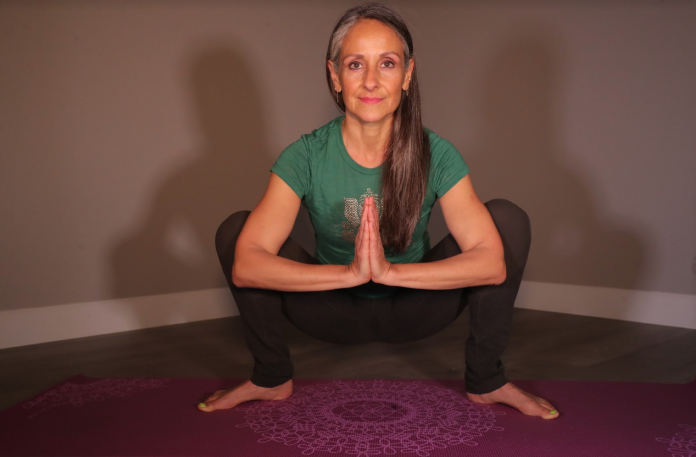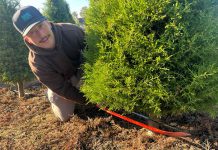
That suddenly outdated calendar that you take down from the wall on New Year’s Day—ever notice how heavy that thing is?
Maybe it’s your imagination, or maybe it’s from the accumulated Post-Its and appointment cards paper-clipped to it. But doesn’t it feel like the calendar from the expired year that you’re throwing out weighs about twice as much as the new one just out of the shrink wrap?
What you’re experiencing there is psychic weight, and it’s human nature. The New Year’s Resolution is a cliché, but it’s a cliché that few of us can escape. Sure, you can change your life just as fundamentally in June or September, any hour of any day in fact. But there is something about an old year ending and a new one beginning that makes us all want to feel new again. Maybe it’s the arbitrary chronological starting point of January 1 coming after the hedonism of the holiday season, or maybe it’s something hard-wired in the human experience tied to the winter solstice and the point when the days begin to get longer. Either way, it’s hard to deny—January is the time for personal rejuvenation … or, at least, attempted or longed-for personal rejuvenation.
It is impossible to generalize about New Year’s rejuvenation, though it is often tied to losing weight, eating better and/or exercising more. But it can just as easily be about better relationships, better work habits or more attention to career or artistic goals. Either way, the need to shake off the bad habits of the old year and experience some kind of renewal can be irresistible.
“There are some years that, by November or December, you’re just limping to the finish line,” said Jeannie David, a reiki healer and shamanic practitioner based in Gilroy. “Emotionally, you’re just crawling to the end, (thinking) if I can just make it to the beginning of the year, I can get that fresh start.”
So, what does it take to make meaningful, positive and lasting change? What is the mindset that’s going to get you off the couch and out into the world? The professionals in the ever-growing wellness industry will tell you that if you want to make change, comfort is not your friend.
“We all have to, in our lives from time to time, find the comfort within the discomfort,” said Courtney Evans, the owner/operator of Kamal Yoga Studio in Hollister. Yoga studios like Kamal often experience a surge of interest at the beginning of the year, both from the New-Year’s-resolution crowd and from those who received gift certificates at Christmas to try it out. Enlarging the comfort zone by expanding into discomfort is one of yoga’s primary selling points, whether that’s body discomfort (the stretches and poses) or social/psychological discomfort (all those hang-ups about how you might look or perform in public).
“Doing new things or new routines can be scary and intimidating,” said Evans. “But that’s how you make routines—you have to get through the uncomfortable part.”
Kamal opened in 2017 offering Hollister and San Benito County a wide variety of yoga styles—heated yoga, slow yoga, pilates and more—with four instructors, and maximum flexibility with daily drop-in classes. Evans—who grew up in Hollister but started her yoga practice in Fresno before returning to her hometown—talks a lot about discomfort, but she also insists that yoga “conforms to everyone. If you can breathe, you can do yoga.”
Much of the same dynamic is at play in Bonni Kelley’s business, Pono Wellness Spa in Morgan Hill. At Pono, the path to rejuvenation is therapeutic massage. And, just as some people come to yoga with certain misplaced preconceptions and fears of judgment, they approach massage with similar prejudices. Massage also suffers from a misperception of what it is. Kelley, in fact, blanches at one particular p-word: “pampering.”
“It’s not about pampering yourself,” she said. “It has nothing to do with that. It’s about self-care. My elevator speech is always that we take better care of our cars than we do ourselves. (In our cars), we change the oil, rotate the tires. But what do we do for ourselves?”
Massage doesn’t require the physical exertion and demands of yoga, but it presents many of the same issues of self-consciousness to overcome—wariness about pain and body-image problems. At Pono, Kelley and her therapists work with clients to demystify the experience and to restore the body’s ideal alignment, that she calls “parasympathetic mode.”
“Especially in Silicon Valley, we’re all running around ‘Lions and Tigers and Bears,’ in sympathetic mode,” she said, “which has a horrible hormonal cocktail that it’s pumping through our bodies that is really leading to some of the bad diseases we see now. But when you get to that moment where your body can rest and digest, parasympathetic mode—and that happens almost every time on the massage table—it helps the brain find a way to get back into that mode next time you need it.”
Both yoga and massage require long-term commitments to be of lasting value, which brings up the flip side of the New Year’s resolution phenomenon. As much as fitness clubs and gyms are packed in January, the crowds often evaporate in March. Meaningful personal change is a function of time and the discipline to establish a habit.
Morgan Hill yoga instructor and nutritionist Dolores Kent requires new clients to sign on for at least 25 visits, which represents about a six-month commitment. She offers a holistic approach, she said, of helping her clients pinpoint their needs and designing a program to address those needs.
In her experience, commitment is often a product of serious of purpose. “People who stick with things are often people who feel they have hit rock bottom,” said Kent. “They feel horrible about themselves and they want to change and move forward.”
Kent’s own life story, which began in Mexico, represents a model for consistent self-improvement. “I had to step totally out of my comfort zone,” she said. “English is not my first language. But I decided I was going to be an aerobics instructor. Then I became a personal trainer, then I switched to doing yoga. After that, I got my nutrition consulting degree and I’m expanding my horizons the whole time.”
Her advice on taking those first steps toward a life of self-improvement: get off the fast-paced hamster wheel. “Slowing down will always make us more conscientious about how we behave,” she said.
Slowing down is great, but sometimes the best way to get out of a rut is to speed up—on a track. Roller derby doesn’t claim to be a method of holistic healing and self-betterment like yoga or therapeutic massage. But it does offer a new adventure outside of most people’s comfort zones (sometimes way outside), that can lead to a sense of well-being and empowerment.
“In derby, you learn to take a hit and stay standing,” said Linda Atkins, aka “Lollie Quinn” of Hollister’s Faultline Derby Devilz. She means that both literally and figuratively. The Devilz attract women from all over San Benito and southern Santa Clara counties, and the vibe is more about fun than high-level athletic competition. “Our team is unique in that almost everyone on our team is a mom,” said Atkins.
The team holds a series of “boot camps” for newbies in the early part of the year to take advantage of the New Year’s resolution phenomenon. The boot camps are really about having fun, learning how to skate and learning how to fall. “It sounds like a big scary thing to start doing roller derby,” said Atkins. “But the boot camps are so simple. It’s really about having a teachable mind and giving yourself the grace and patience to fall and to get used to it. We have every body type, ethnicity, styles, ages. It makes you really feel empowered as a woman individually.”
Reiki master Jeannie David said that making meaningful change requires a sense of courage and a willingness to stare down negativity. “What I try to counsel my clients is to give up worry to the universe. Worry is like a negative prayer.”
And, when you make that commitment to self-betterment, it’s good to know you’re not alone. “The baby boomers are going down fighting,” said Bonni Kelley of Pono Wellness Spa. “They really are. This is the best time to be a massage therapist because baby boomers want alternatives. They don’t want to take drugs. They are looking at massage, chiropractic, acupuncture, yoga, all these things. That’s the way everybody’s going.”
For more information:
Pono Wellness Spa: ponowellnessspa.com
Dolores Kent: doloreskentyoga.com
Kamal Yoga Studio: kamalyogastudio.com
Jeannie David, reiki: e-mail to jd***************@***il.com
Faultline Derby Devilz: facebook.com, search for Faultline Derby Devilz









